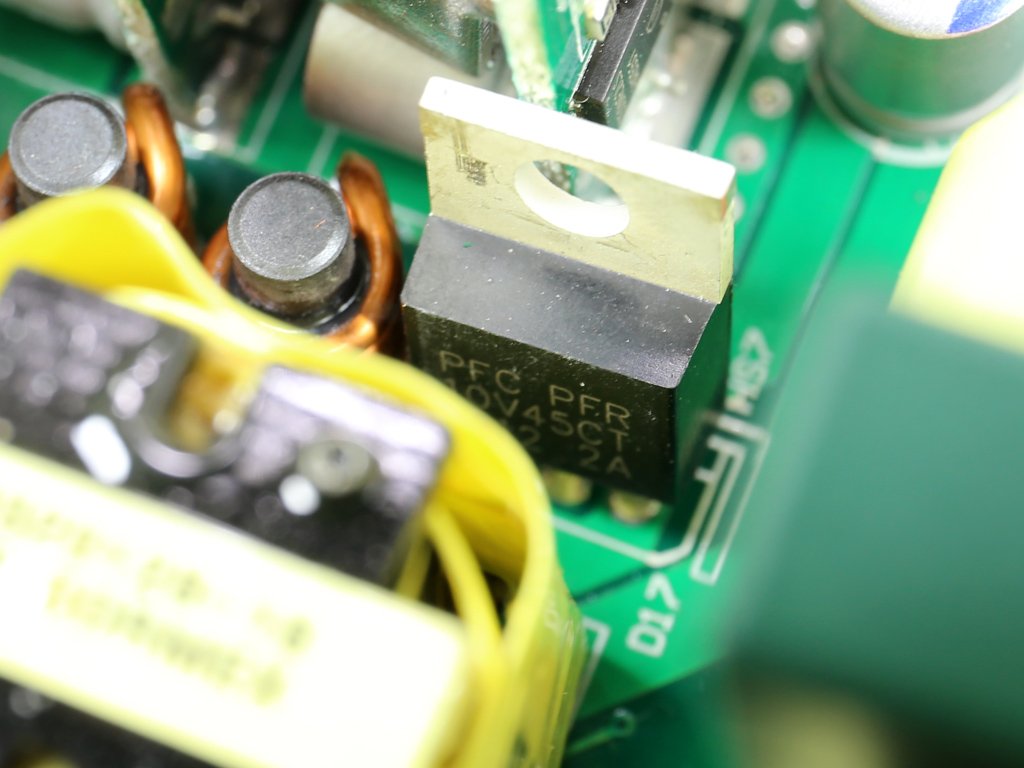Gigabyte Xtreme Gaming 1200 W PSU Review
Gigabytes re-enters the high-end PSU market with its Xtreme Gaming 1200 W PSU. Besides high capacity, it also features Platinum-rated efficiency, modular cables, and interesting looks. This unit is built to meet the demands of enthusiasts, to be sure.
Why you can trust Tom's Hardware
A Look Inside And Component Analysis
Parts Description
Before proceeding with this page, we strongly encourage you to a look at our PSUs 101 article, which provides valuable information about PSUs and their operation, allowing you to better understand the components we're about to discuss. Our main tools for disassembling PSUs are a Thermaltronics soldering and rework station, and a Hakko FR-300 desoldering gun.
| General Data | |
|---|---|
| Manufacturer (OEM) | Enhance Electronics |
| Primary Side | |
| Transient Filter | 4x Y caps, 4x X caps, 2x CM chokes, 1x MOV, 1x CM02X |
| Inrush Protection | NTC Thermistor & Relay |
| Bridge Rectifier(s) | 2x |
| APFC MOSFETs | 2x Infineon SPW60R099C6 (650 V, 24 A @ 100 °C, 0.099 Ω) |
| APFC Boost Diode | 1x CREE C3D10060G (600 V, 10 A @ 152 °C) |
| Hold-up Cap(s) | 2x Rubycon (420 V, 560 uF each, 2000 h @ 105 °C, MXH) |
| Main Switchers | 4x Infineon IPP60R160C6 (650 V, 15 A @ 100 °C, 0.16 Ω) |
| Driver ICs | 2x Silicon Labs Si8230BD |
| APFC Controller | Champion CM6502TX & CM03X |
| Switching Controller | Champion CM6901 |
| Topology | Primary side: Full-Bridge & LLC Resonant Converter Secondary side: Synchronous Rectification & DC-DC converters |
| Secondary Side | |
| +12V MOSFETs | 12x International Rectifier IRFH7004PbF (40 V, 164 A @ 100 °C, 1.4 mΩ) |
| 5V & 3.3V | DC-DC Converters: 4x Infineon BSC050NE2LS (25 V, 37 A @ 100 °C, 5 mΩ) 2x APW7073 PWM Controllers |
| Filtering Capacitors | Electrolytics: Nippon Chemi-Con (105 °C, KY, KZH, KZE), United Chemi-Con (105 °C, LXZ, 2-8,000h), Rubycon (105 °C, 3000-6000 h, YXG), Unicon (105 °C) Polymers: Nichicon, Unicon |
| Supervisor IC | SITI PS223 (OVP, UVP, OCP, SCP, OTP) |
| Fan Model | Power Logic PLA13525B12H (12 V, 0.56 A, 2400 RPM, 130.2 CFM, 46.8 dB[A], Dual Ball-Bearing) |
| 5VSB Circuit | |
| Rectifier | 1x PFR10V45CT |
| Standby PWM Controller | STR-A6069H |
| -12V Circuit | |
| Rectifier | 1x L7912CV (T0-220, 1.5 A, -12V) |

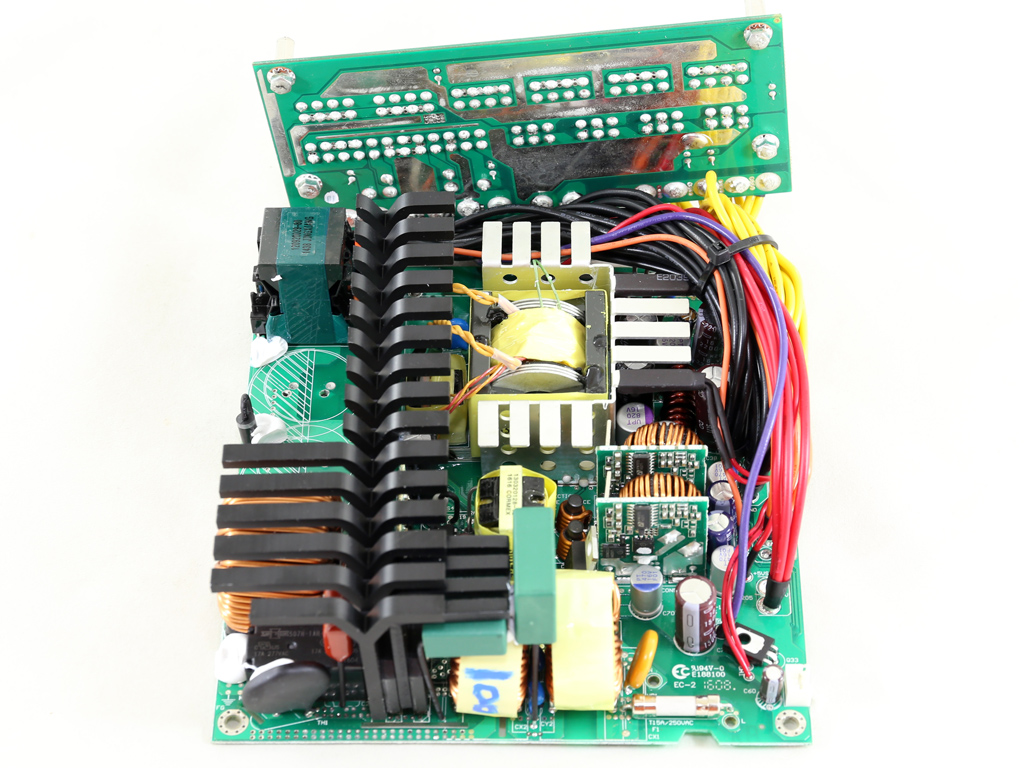
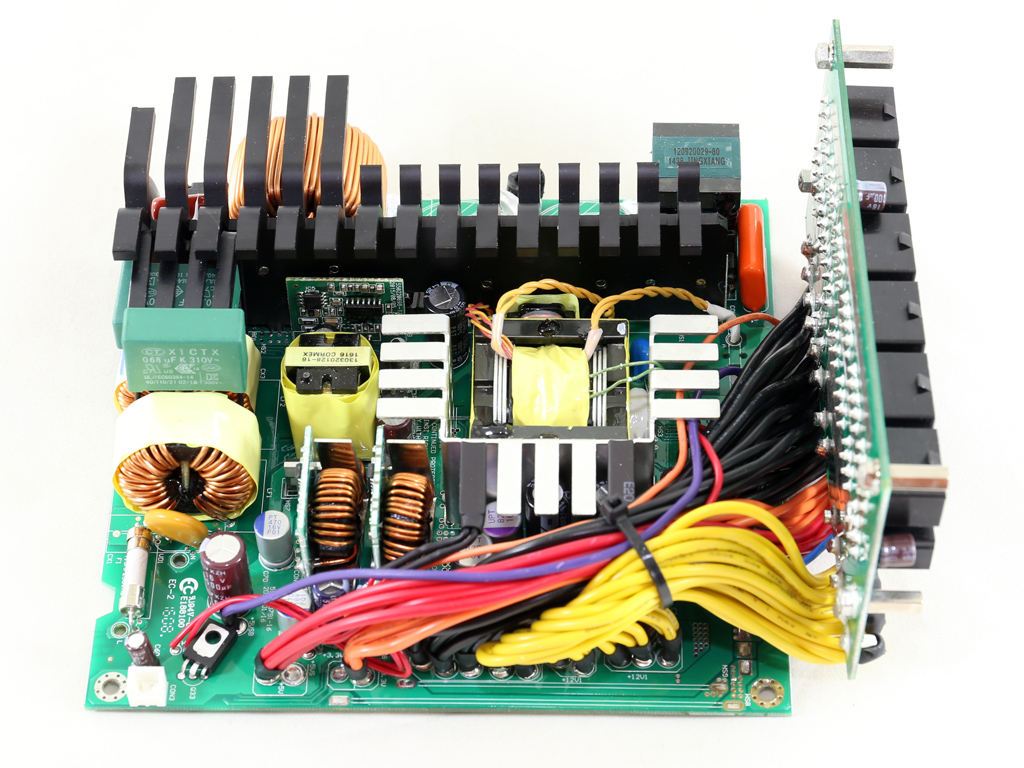

Gigabyte uses a high-end Enhance platform for its flagship Xtreme Gaming model. The design looks clean enough thanks to the small main transformer and a mainboard that's not densely packed. Its heat sinks are medium-sized for Enhance's standards, since this is a Platinum-rated unit with lower energy losses. A full-bridge topology is used on the primary side along with an LLC resonant converter, while on the secondary side a couple of voltage regulator modules generate the minor rails. Again, we saw this same configuration in our Rosewill Quark 1000 review.
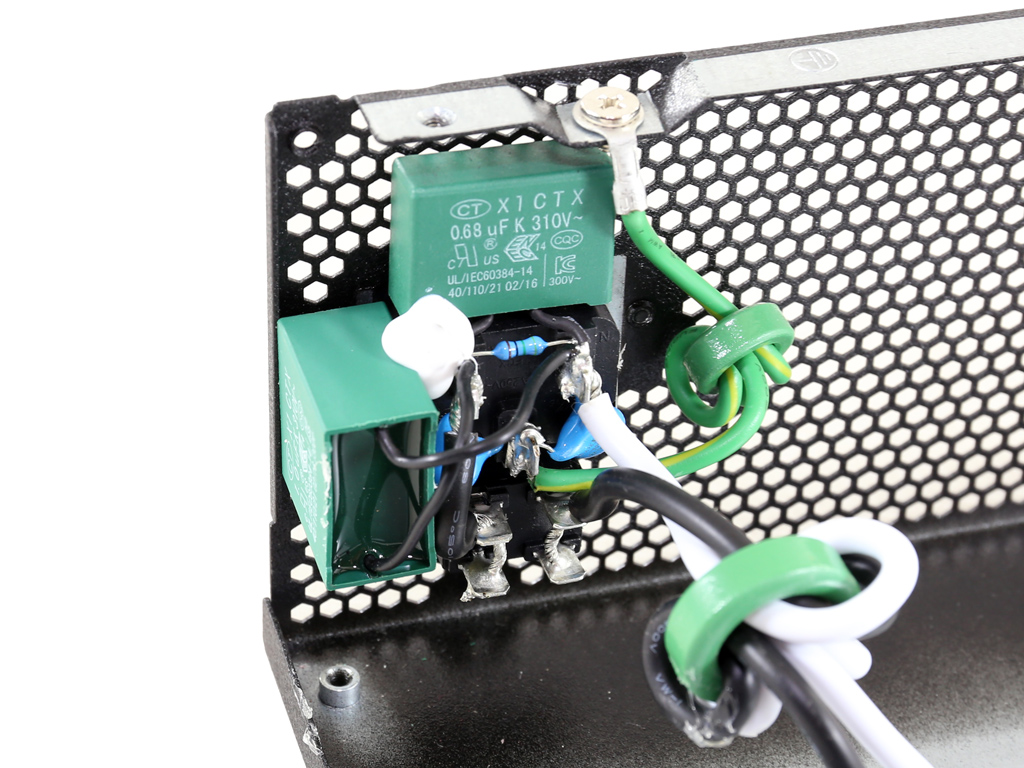


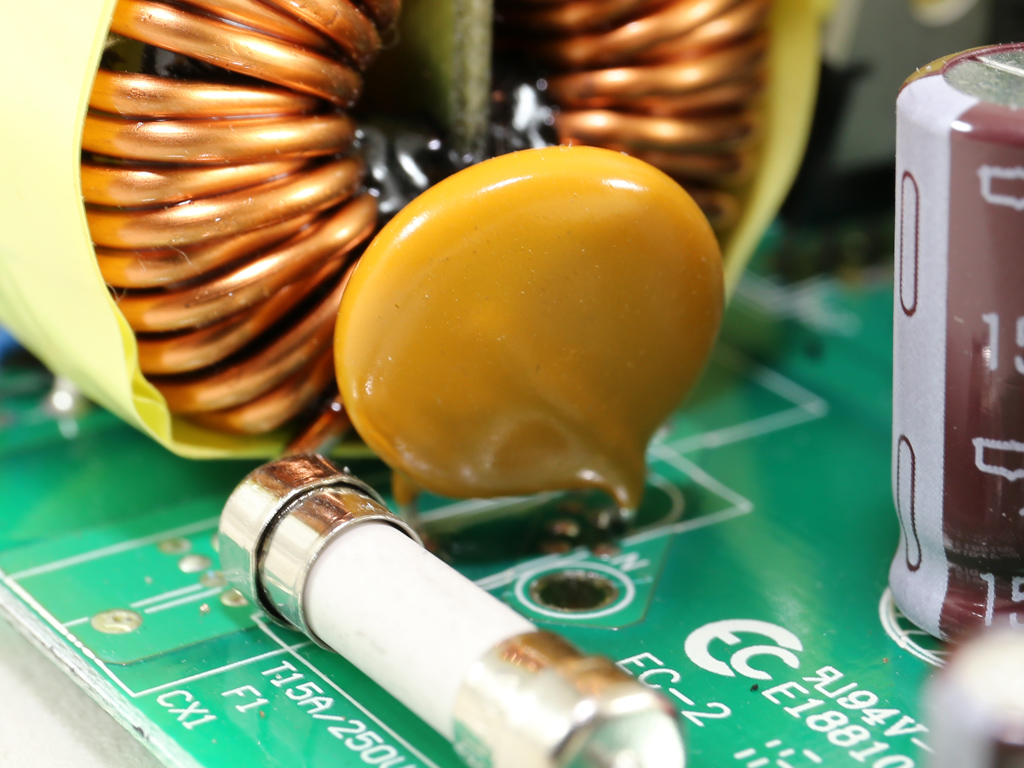


The first part of the EMI filter starts at the AC receptacle with two X and two Y caps. As usual, this filter continues on the main PCB with two more X caps and two additional Y ones, along with two CM chokes and an MOV. There is also a CM02X IC installed on the solder side of the main PCB, which is responsible for blocking current through an X cap's discharge resistor when AC voltage is connected.

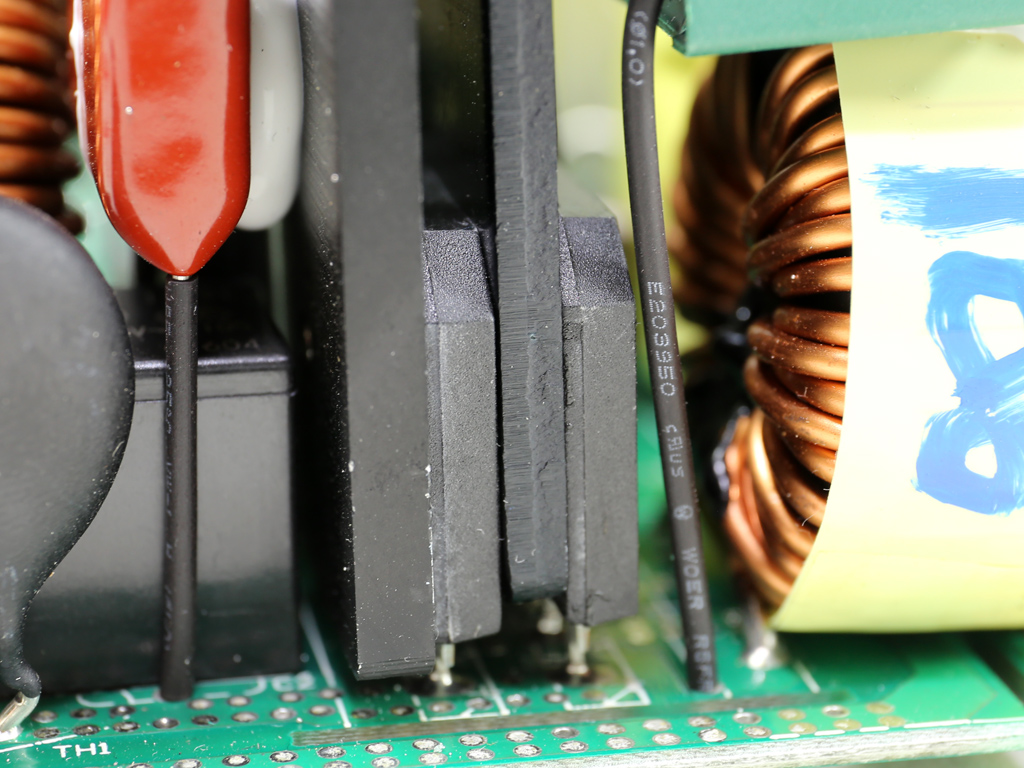

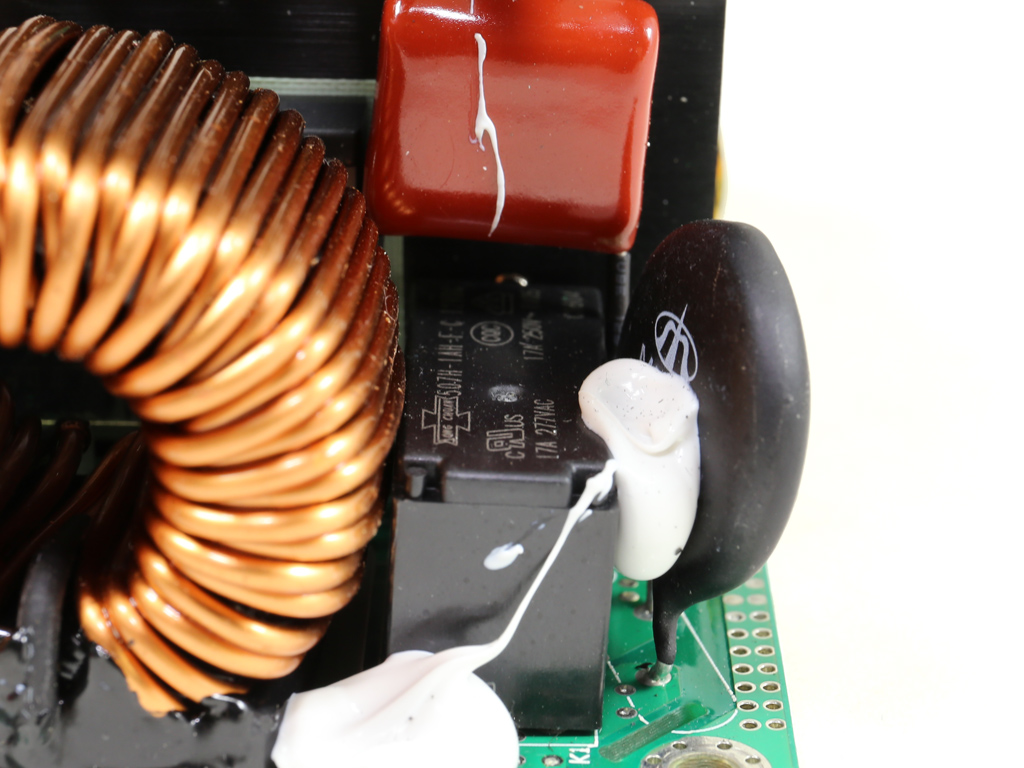
A pair of bridge rectifiers is installed on a dedicated heat sink. Unfortunately, there is no way to identify their model numbers without messing with the sink. A large NTC thermistor is installed close by, providing protection against large inrush currents. It is supported by a bypass relay in order to cool down faster.
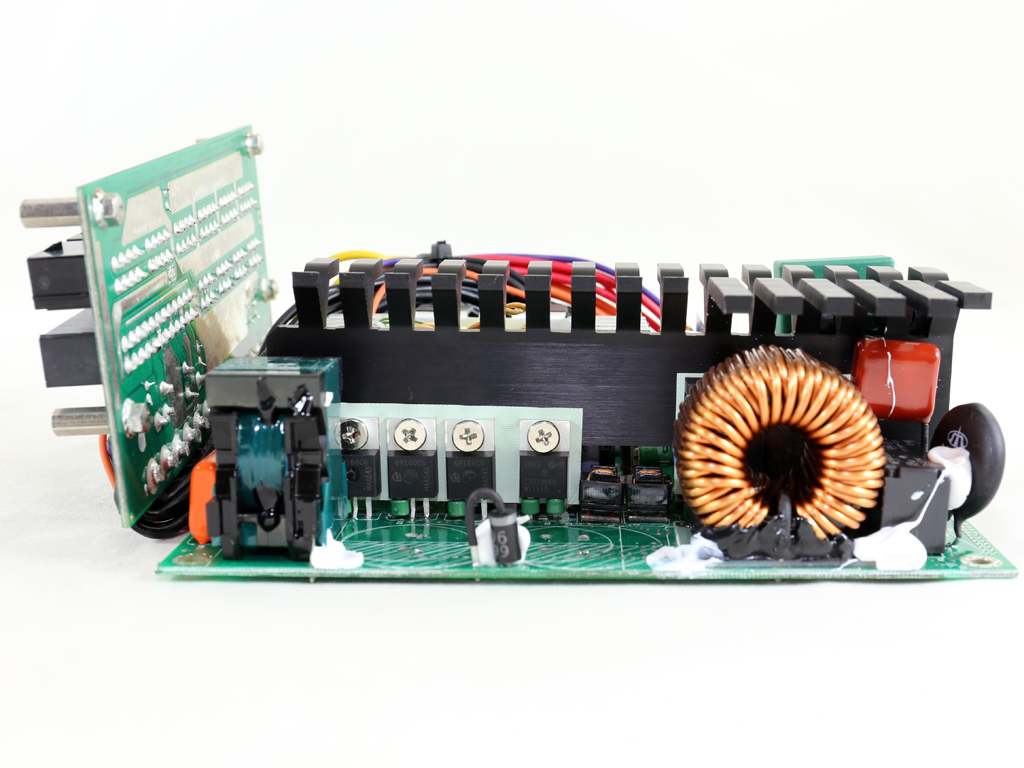

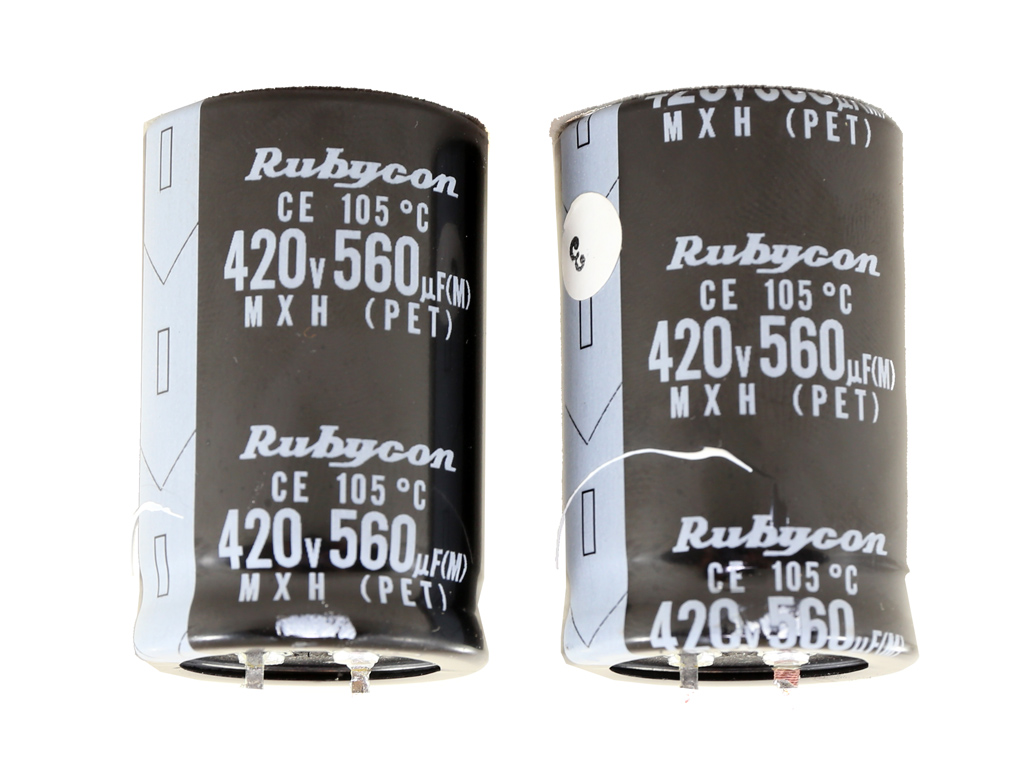
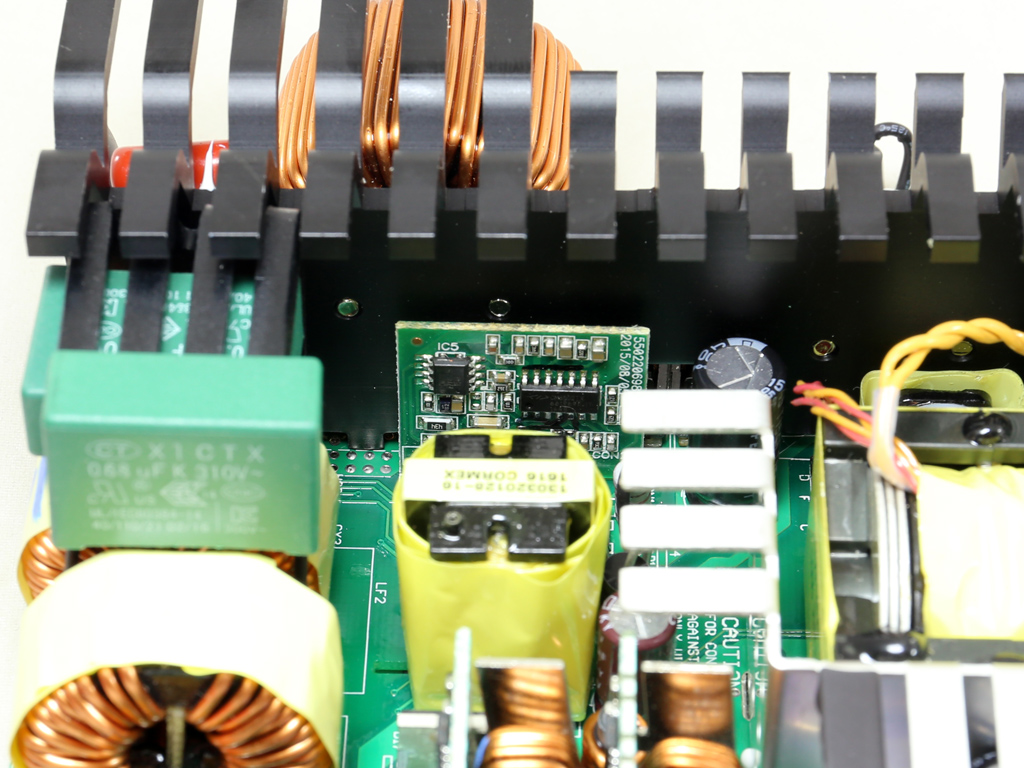
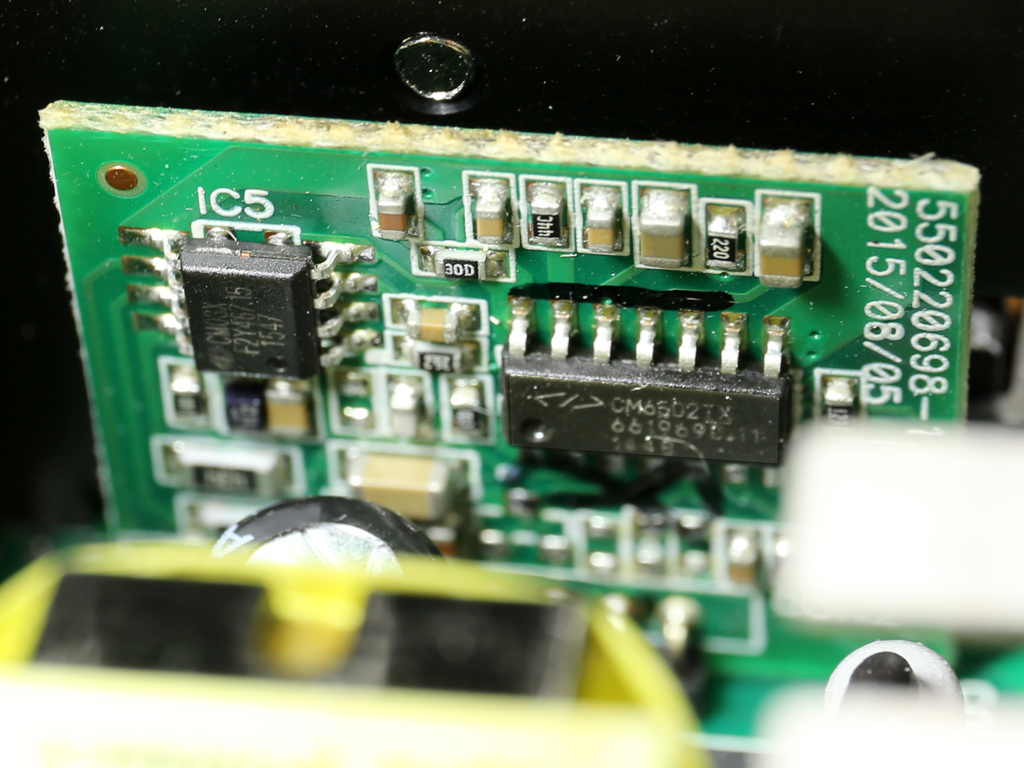
Two Infineon SPW60R099C6 FETs are used in the APFC converter, along with a single CREE C3D10060G boost diode. The pair of bulk caps is made by Rubycon (420 V, 560 uF each, 2000 h @ 105 °C, MXH). The combined capacity of the bulk caps is low, so they won't provide the hold-up time required by the ATX spec. Finally, the APFC controller is a Champion CM6502, which is supported by a CM03X Green PFC controller.
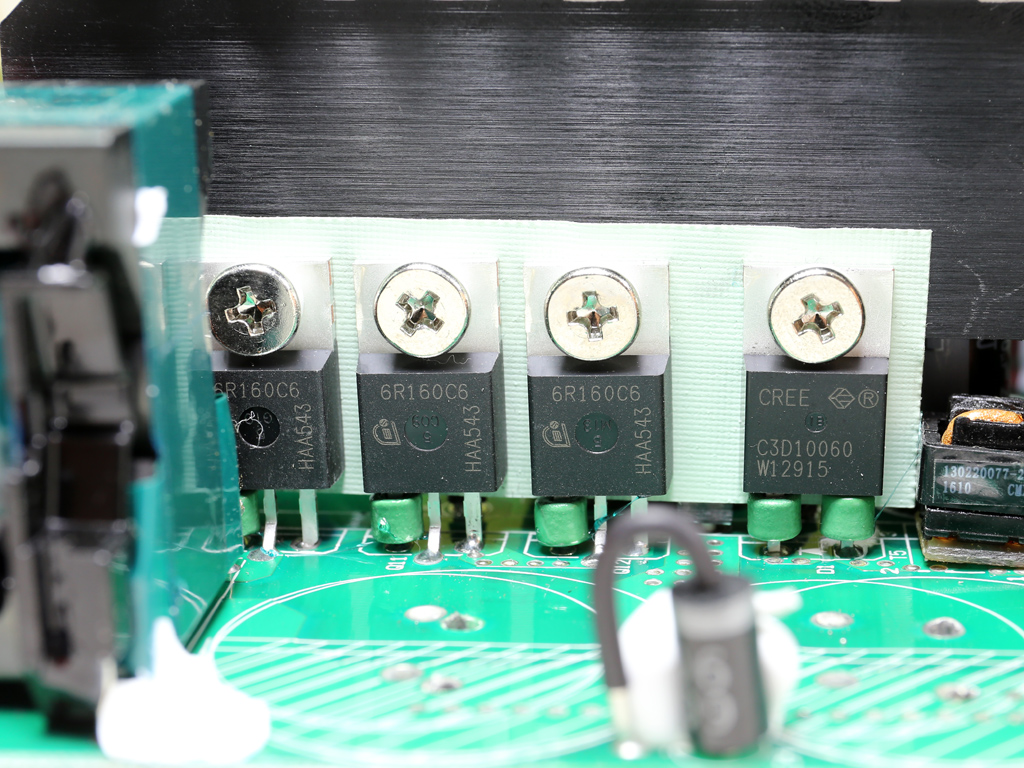

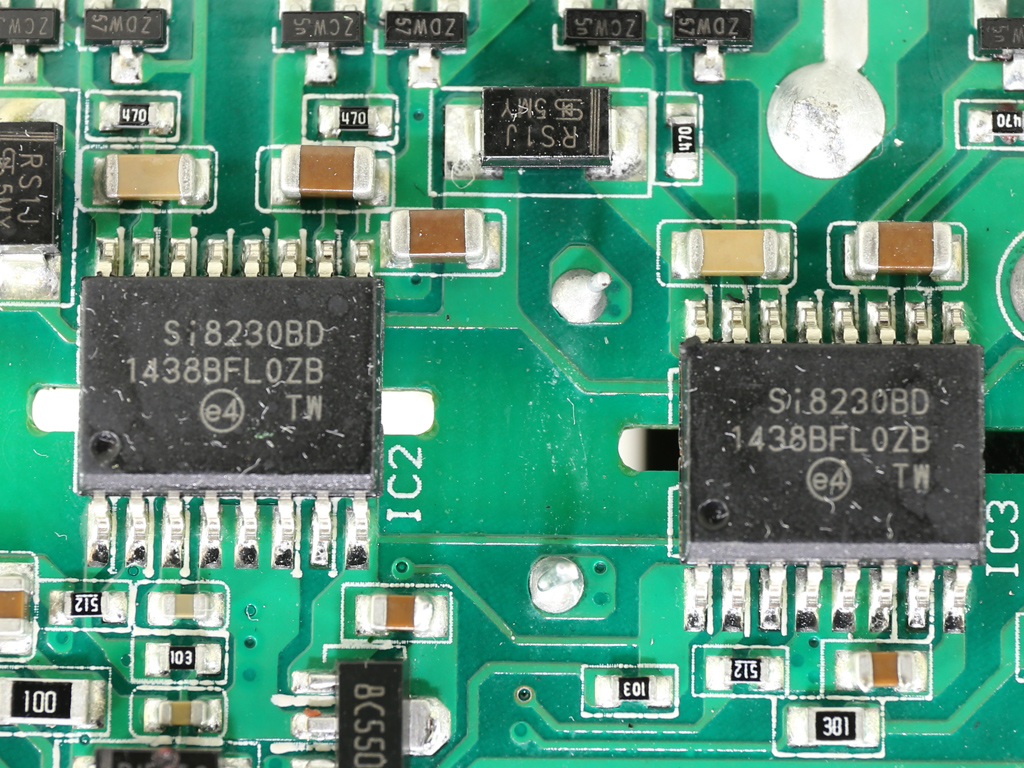
Four Infineon IPP60R160C6 FETs are installed in a full-bridge topology, and they are supported by an LLC resonant converter that provides almost lossless switching. The LLC resonant controller is a Champion CM6901 IC. Under light loads, it operates the main switchers in PWM mode. Under heavier loads, it uses FM modulation. The driver ICs that handle the main FETs are a couple of Silicon Labs Si8230BD ICs. Each one of the driver ICs can handle a couple of the primary FETs.


The main transformer is pretty small for a unit of this capacity, and it's nearly surrounded by three heat sinks that have nothing attached to them. Nonetheless, these sinks play a key role since they dissipate thermal energy from the FETs underneath them, which regulate the +12V rail. Two thermistors are attached to one of the +12V sinks' fins with the help of heat-shrink material. One thermistor provides data to the fan control circuit, while the other one is used by the over-temperature protection feature.
Get Tom's Hardware's best news and in-depth reviews, straight to your inbox.
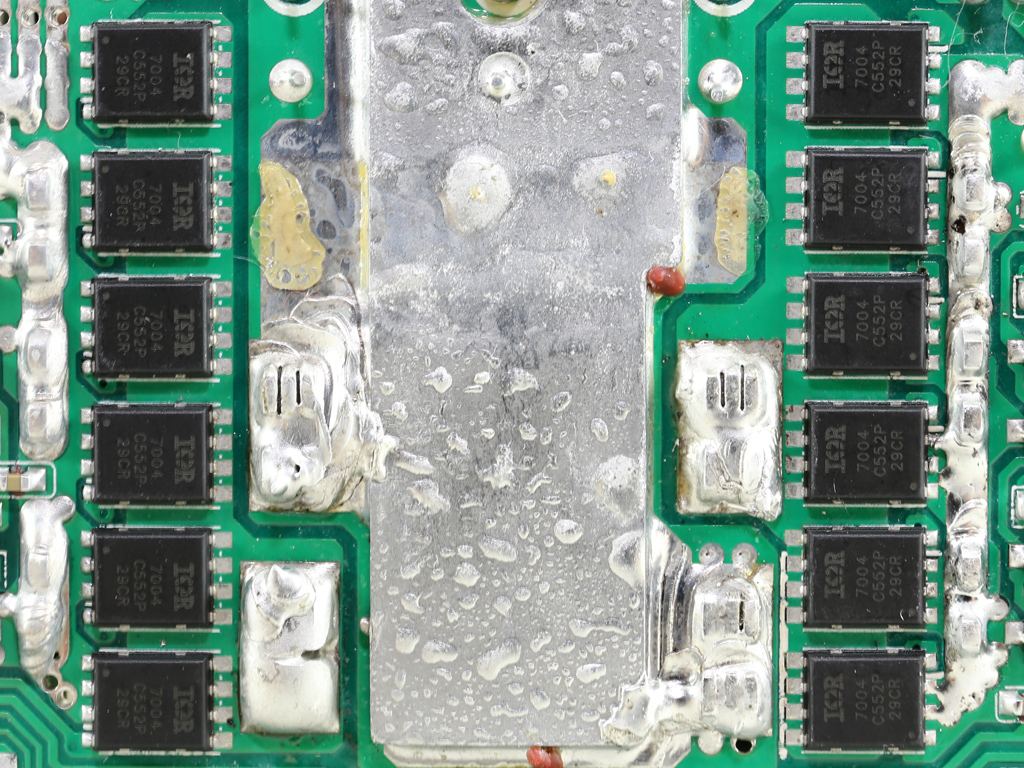
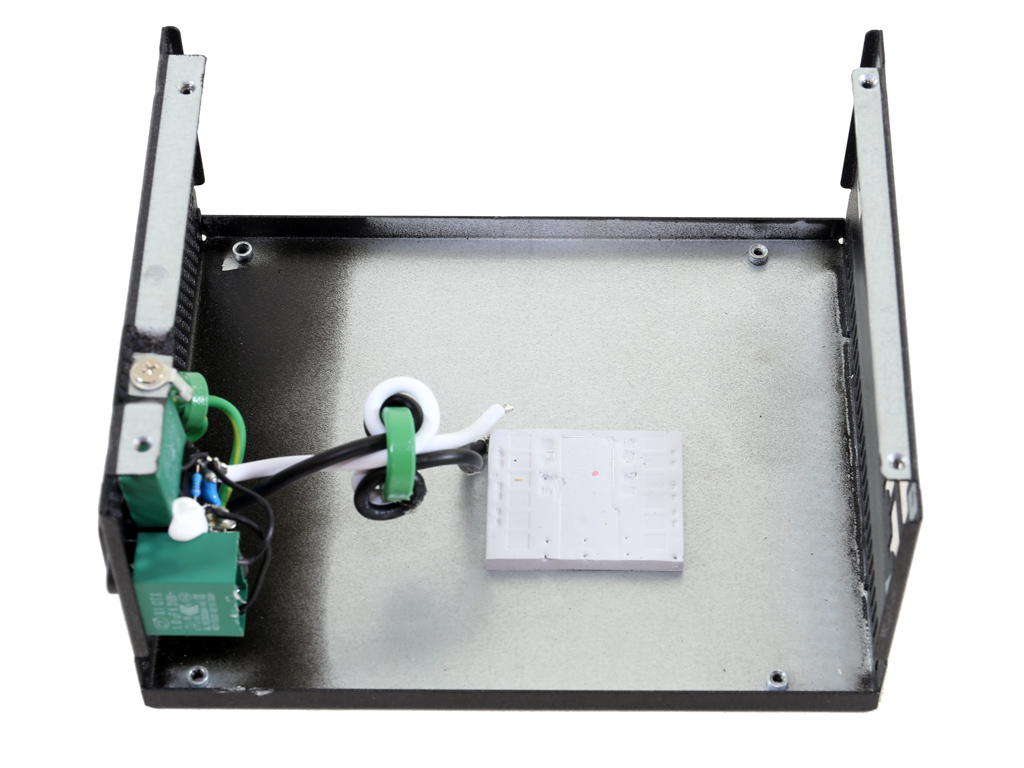
In total, 12 International Rectifier IRFH7004PbF FETs generate the +12V rail. Besides the heat sinks described above, those FETs come in contact with the chassis through a large thermal pad and are cooled by it.
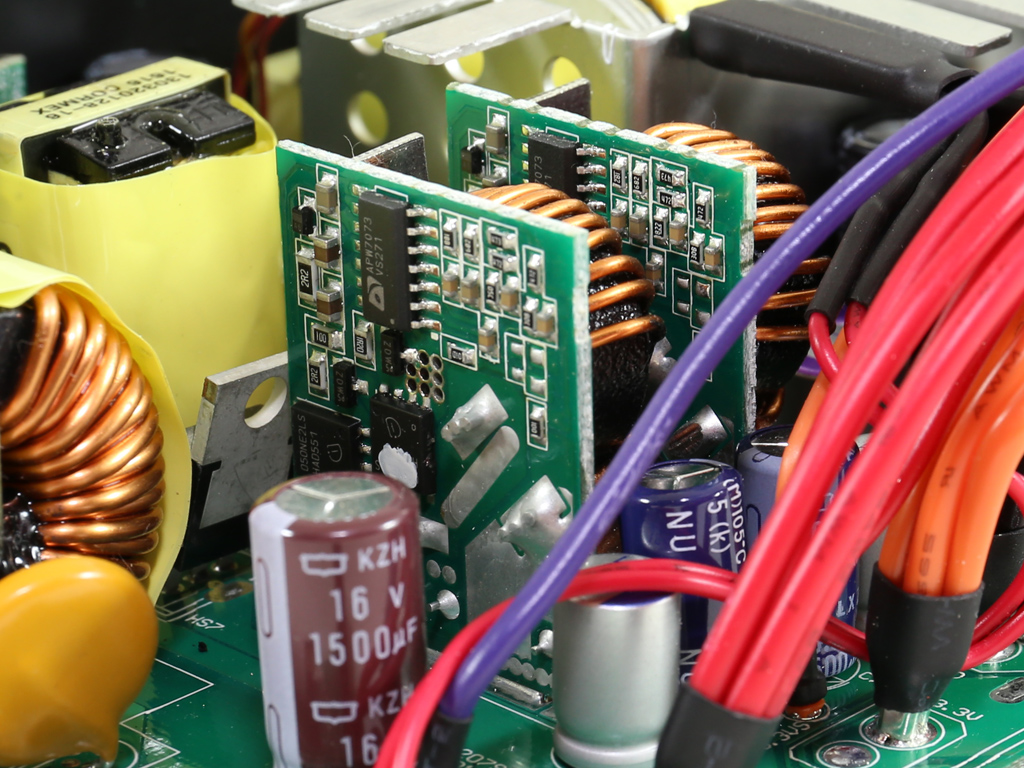



Two DC-DC converters are fed by the +12V rail, generating the minor rails. Each converter uses a couple of Infineon BSC050NE2LS FETs along with a single ANPEC APW7073 controller.
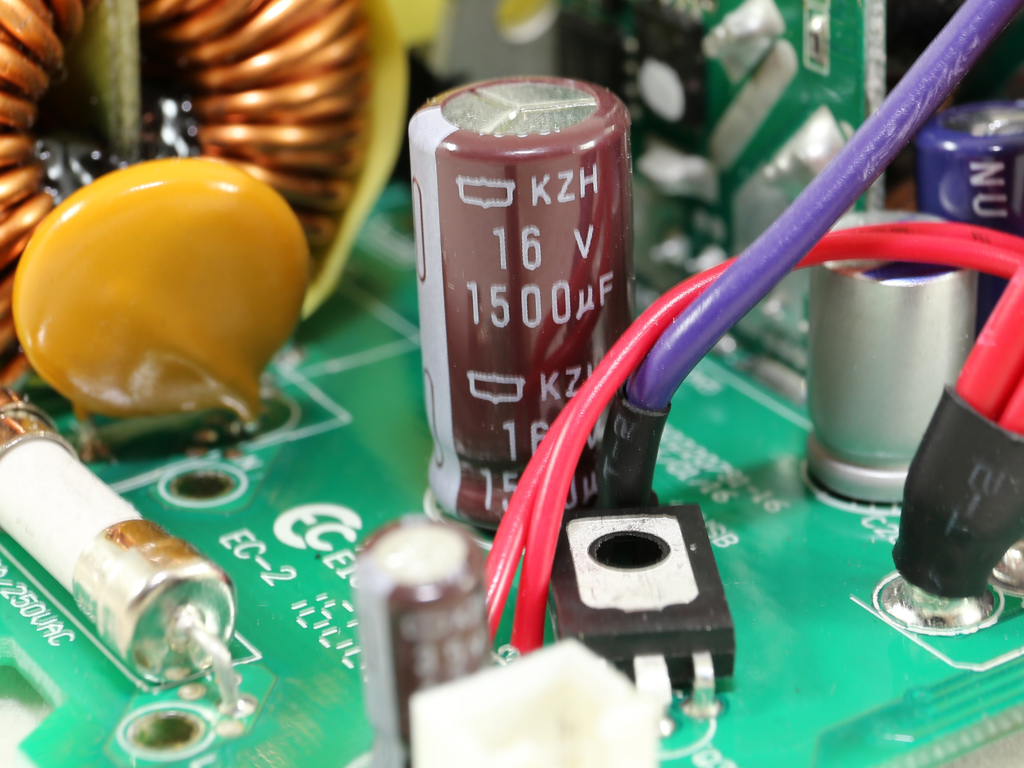

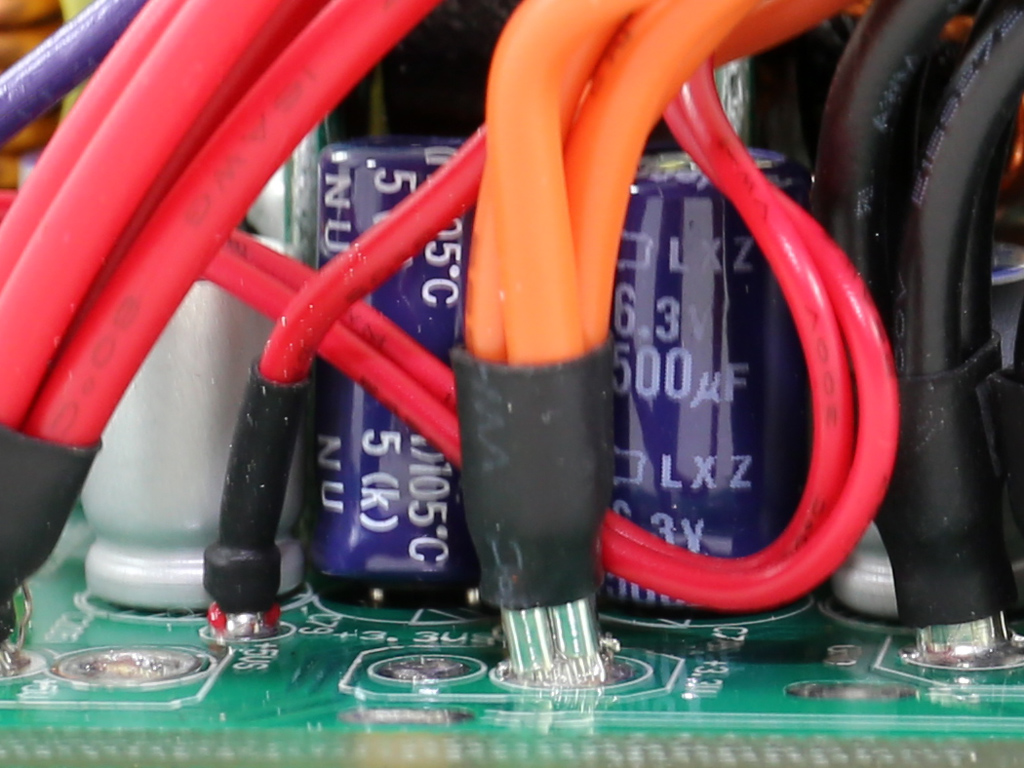
The electrolytic capacitors that filter the rails on the secondary side are provided by Chemi-Con, Rubycon, and Unicon. The first two brands are Japanese and the third is Taiwanese, so this PSU doesn't exclusively use Japanese caps. Besides electrolytic caps, a number of polymer ones are also used, sourced by Unicon and most likely Nichicon.
The standby PWM controller is a Sanken STR-A6069H IC, and the SBR that rectifies the 5VSB rail, a PFR10V45CT, is right next to the 5VSB transformer.
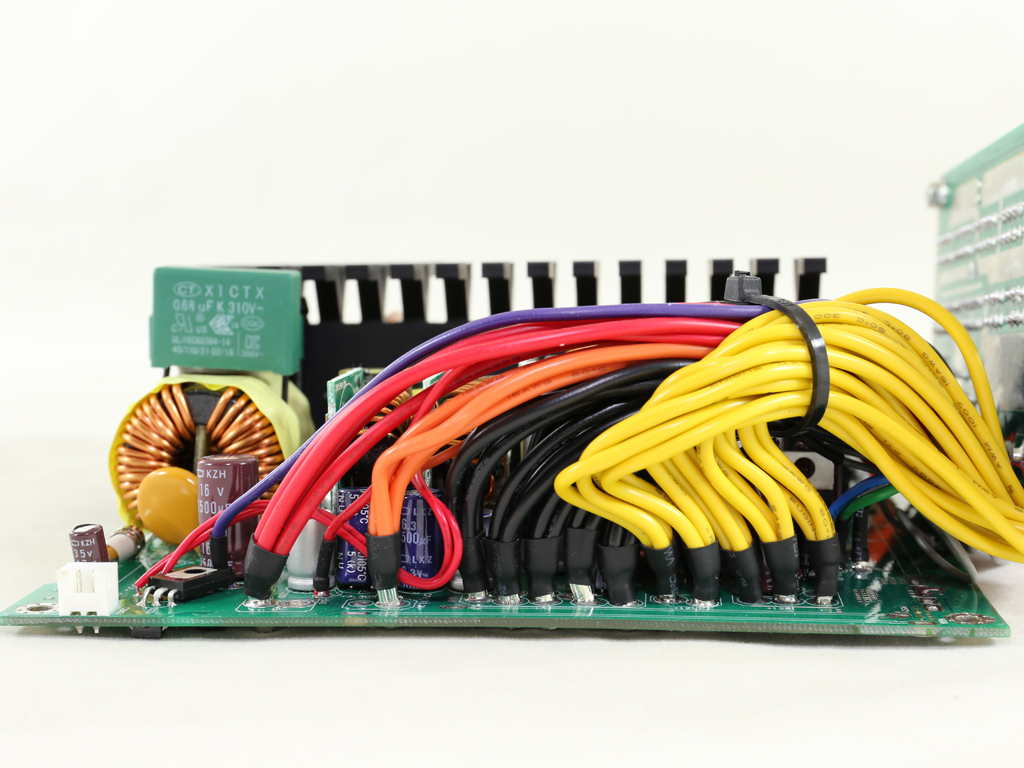
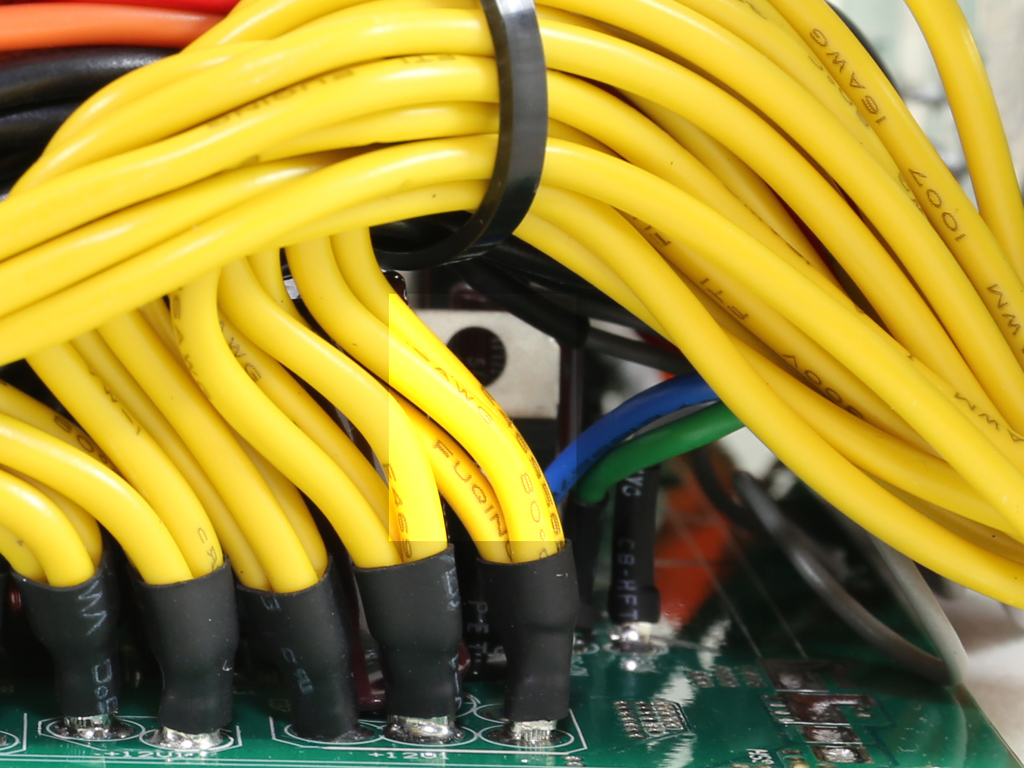
On the secondary side, hidden below the power transfer cables, we find a L7912CV rectifier used by the -12V rail. Usually a simple Zener diode will do the job just fine for this rail, but Enhance uses a more elegant solution.

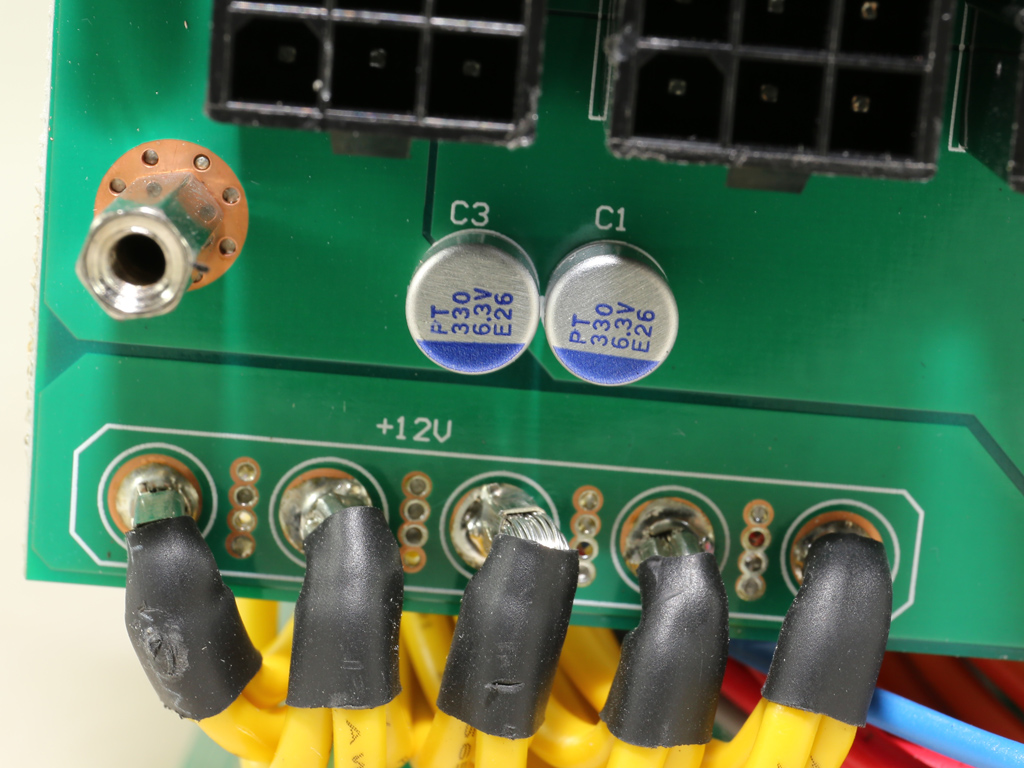

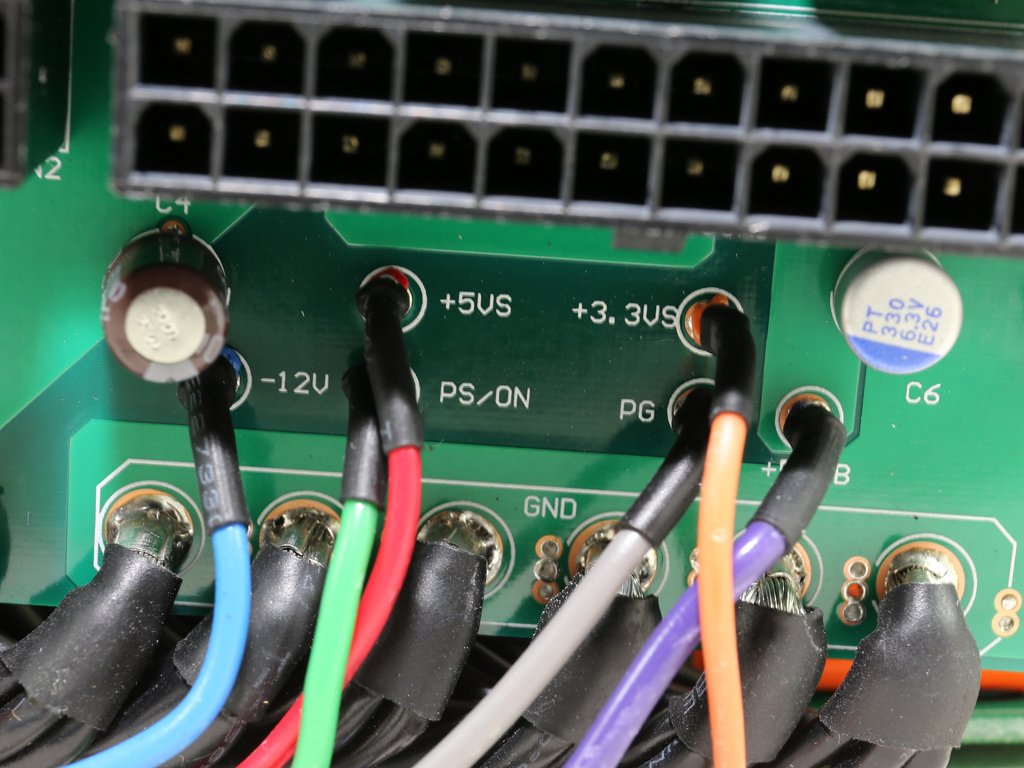
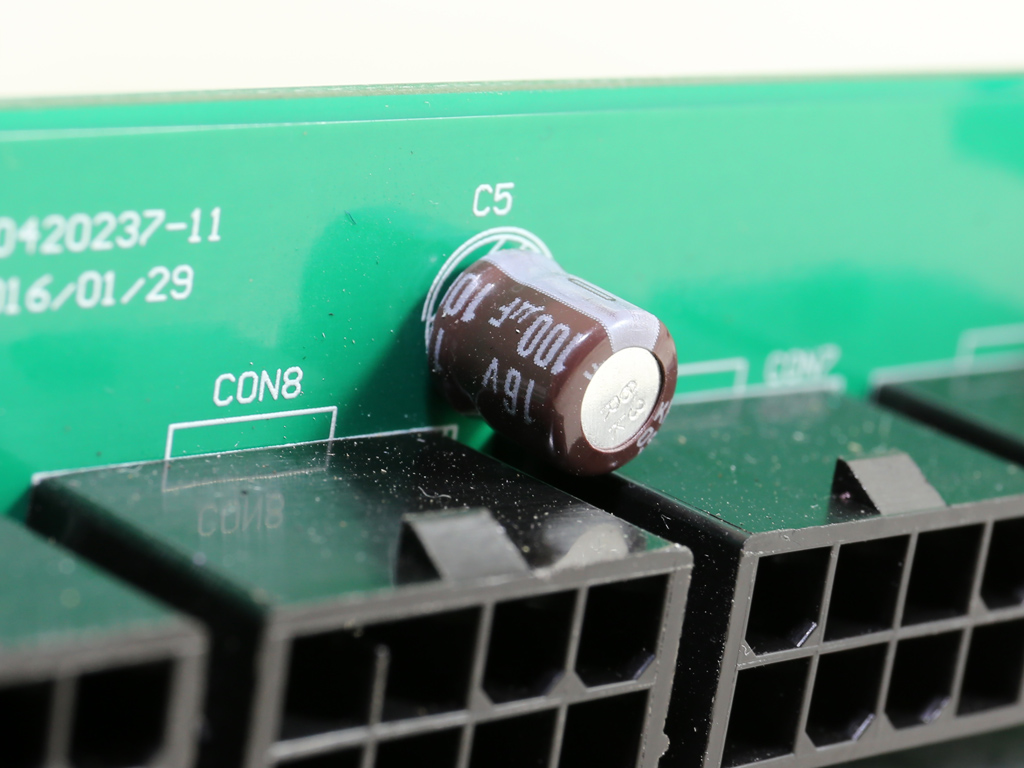

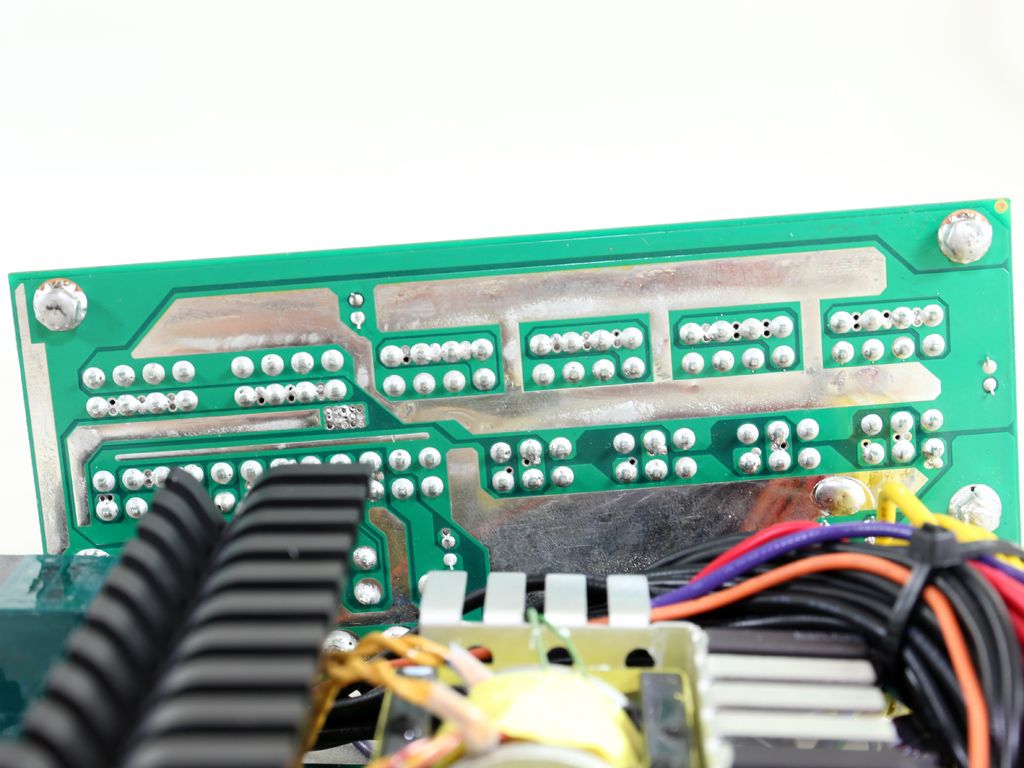
On the front side of the modular board, several polymer caps apply some extra ripple filtering to the rails.
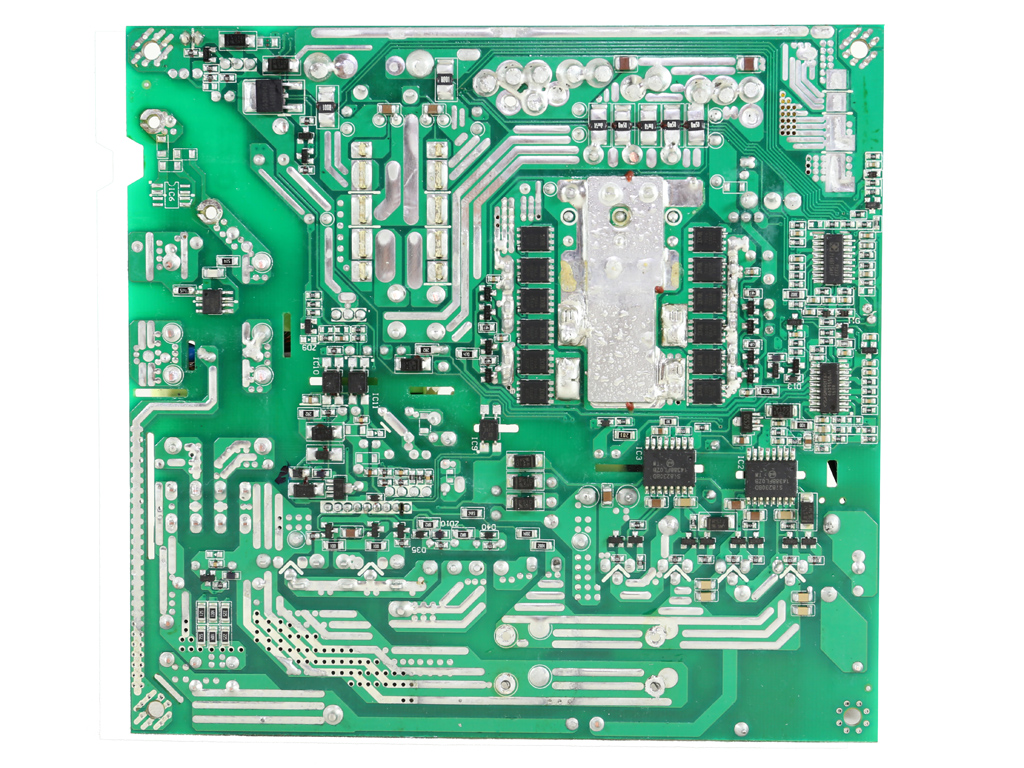
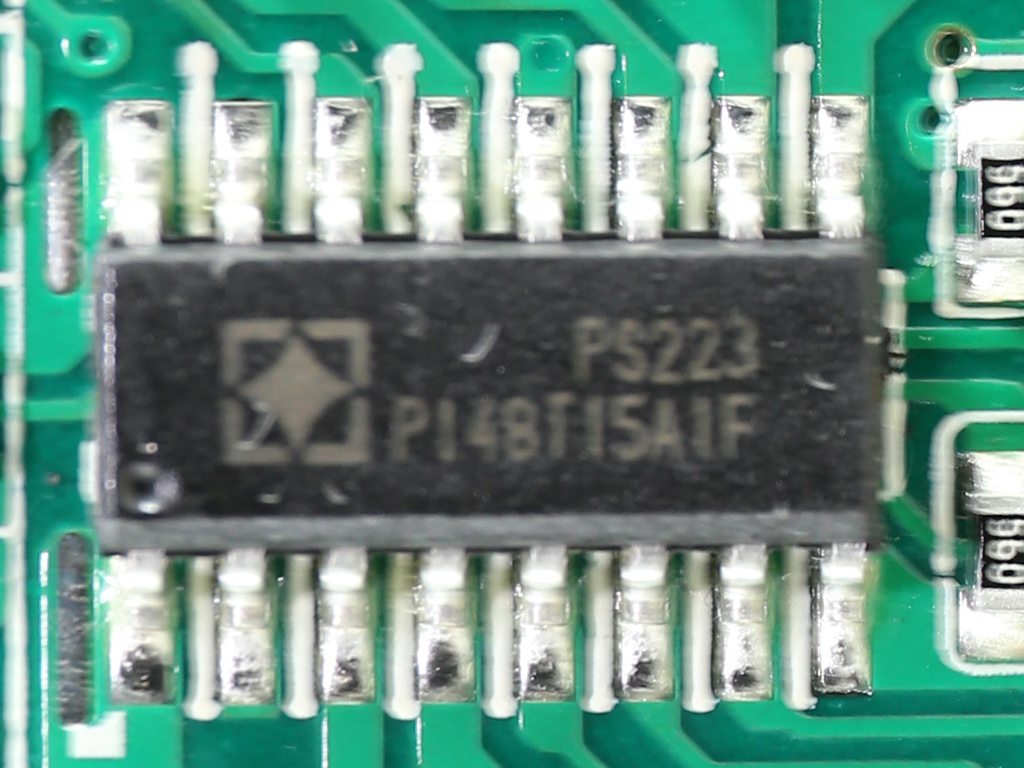






The soldering quality is pretty good. We expected this, since Enhance pays lots of attention to quality. Moreover, we don't see any long component leads that could cause dangerous electrical shorts. We do see the supervisor IC, a SITI PS223, which is among the few with support for OTP out of the box, along with a SG30N04D FET that most likely feeds the 5VSB rail from the 5V one.

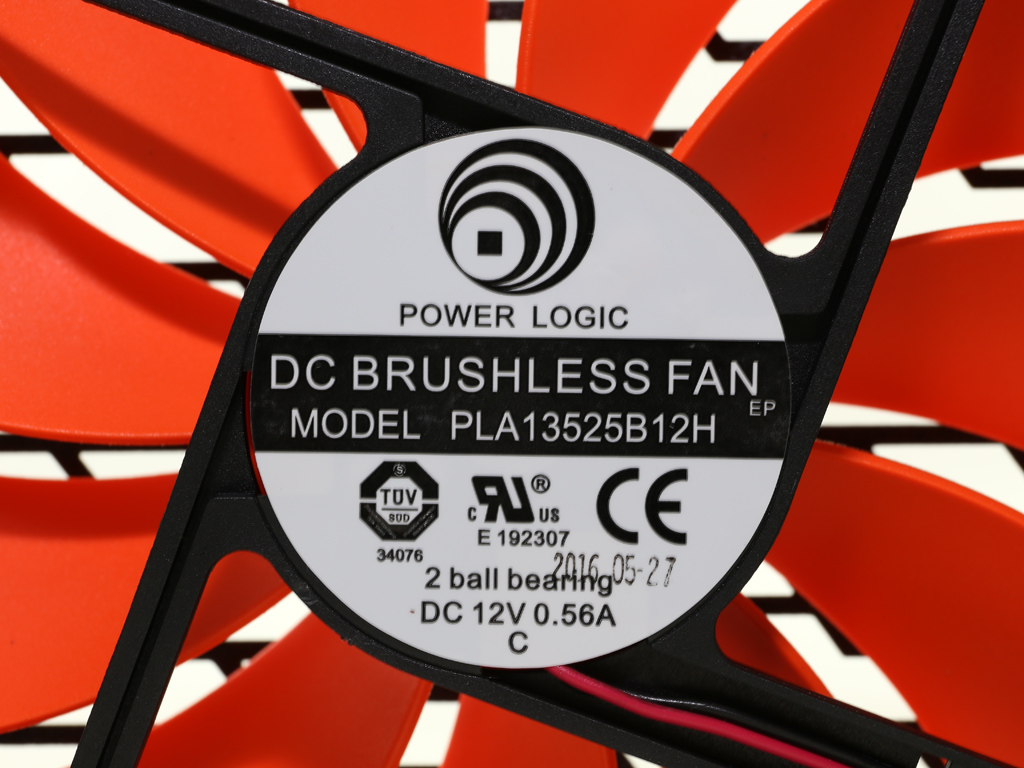
The fan is provided by Power Logic and its model number is PLA13525B12H (12 V, 0.56 A, 2400 RPM, 130.2 CFM, 46.8 dB[A]). It uses a double ball-bearing that should last quite a while. The main downside of this fan is that it is very noisy due to the high speeds it can achieve. To make matters worse, Gigabyte employs an aggressive fan profile. Given the Platinum efficiency rating, we expected a lower-speed fan or a more relaxed fan profile. In addition, the large heat sinks should facilitate the inclusion of a semi-passive mode. Apparently, Enhance wanted to be on the safe side.
Current page: A Look Inside And Component Analysis
Prev Page Packaging, Contents, Exterior, And Cabling Next Page Load Regulation, Hold-Up Time, And Inrush Current
Aris Mpitziopoulos is a contributing editor at Tom's Hardware, covering PSUs.
-
turkey3_scratch Yawn. It's loud. Might not be too loud in most people's cases where the unit is sucking cool air from underneath the computer, and where they overestimate their power requirements, but it's still way too loud. If they're going to make the fan that aggressive, they should give it a longer warranty. Give it an ol' 11 year warranty to beat the competition at least.Reply
The only way Gigabyte is going to sell this at whatever price is if they do some marketing. "Nvidia Gigabyte GPUs work best with Gigabyte PSU" and people will buy it. -
powernod Enhance continoues its mediocre performance!!Reply
The only series i can remember, in which Enhance showed some very good results were the Thermaltake's GRAND Platinum line.
Besides that,..... just mediocre !! -
Vorador2 When i saw that it used the word "xtreme" (ugh) and "gaming" together in the name of the product i knew it was going to be either overpriced or underperforming. Or both.Reply -
Sam Hain In the 1.2kw range... The EVGA SuperNOVA 1200 P2 is a great buy @$230 (or so), awesome specs and performance across-the-board and some of the highest customer ratings to back it's build quality.Reply
